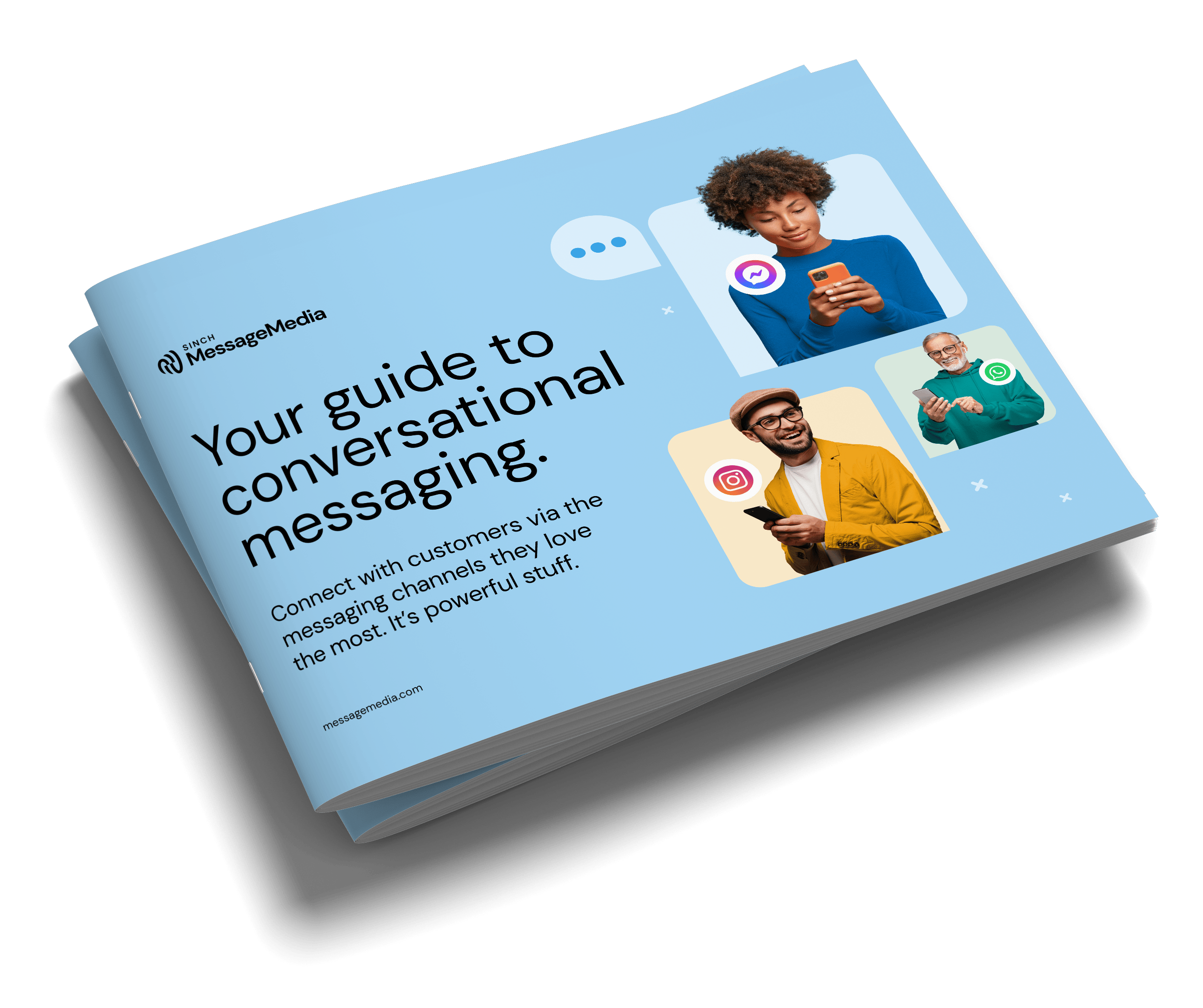Share article:
More than chit-chat: How conversational messaging gets you closer to customers.

Picture this. You’re at a party, and you find yourself talking to some random person you’ve just met — for hours. The conversation ebbs and flows. It has light moments; it goes deep. At the end of it, you’re both left with a fulfilled feeling that you’ve formed a meaningful connection.
Now, we’re not about to tell you that you’ll find your new BFF through business-based conversational messaging. But we are going to show you how conversational messaging can help your brand forge stronger, longer-lasting relationships with customers.
You with us? Let’s dive in.
First up, what is conversational messaging?
It’s what it says on the box. Conversational messaging is a two-way dialogue or conversation between you and a customer via a messaging channel they already use. It could be SMS. WhatsApp. Instagram. Facebook Messenger. Google’s Business Messages.
These conversations can be initiated by you or the customer. For example, you might send out an appointment reminder, and the customer needs to change their appointment or has a question about what to bring. Or, a customer might see an ad you’re running on social media, and reaches out to you with a couple of questions about the product.
Either way, it’s all about helping your customers get closer to you.
And believe us — it’s what they want. According to Forrester, 50% of consumers rank texting or social media messaging as the preferred way to speak to a brand. And, in one of our own recent surveys, 83% of consumers said the option to message a business gave them more confidence in the brand.
Conversational messaging is all about trust and reciprocity. You’re effectively having a one-on-one chat with a customer in a private space. And, because it’s in a channel the customer is already familiar with, they feel more comfortable sharing with you.
50%
83%
42%
Conversational messaging helps you stand out from the crowd.
Did you know that while over three billion people globally use chat apps, many small and medium businesses don’t? Becoming one of the brands that does use chat could become your secret weapon for success.
Think about it. In this day and age — when there are so many channels and touchpoints competing for your customers’ attention — it makes complete sense to meet your customers in the places they hang out. Find them where their most comfortable, and they’ll be more receptive to engage with you.
By offering conversational messaging, you’re sending the message that customers can chat with you whenever they need to. They can reach out with a question or problem, and know that you’re there to help. You’re paving the way for better connections that ultimately help boost the bottom line.
It’s time to get conversational with your customers.

And if you’re worried that your business doesn’t have the time, budget or resources to meet customers in their channels of choice, think again. New technology platforms make it easy to set up and manage conversational messaging across channels, from one central location.
Plus there’s this: social agents can handle four to eight times as many queries per hour as a phone agent, with the per-interaction cost on social US$5 less than the cost per phone call. So it can in fact end up saving you money.
Added bonus? Your team can keep track of all conversations, so one team member can easily pick up where someone else left off.
Nail your convos with these top tips.
Whether you’re using conversational messaging for marketing and sales, customer support or something else, there are a few golden rules to keep in mind.
Be true to your brand voice.
Make sure your messages sound authentically you. This might mean steering clear of the LOLs and emojis if your brand voice is more formal. But if you’ve built a brand on cheeky puns and one-liners, then customers will expect all the LMKs and TTYLs in the world as they chat with you.
Make sure to grab consent.
Remember, the rules of texting still apply with two-way messaging. Which means you’ll need consent from customers if you’re reaching out to them first. And you’ll need to provide the option to opt-out, too.
Pick your words wisely.
While conversational messaging is brilliant for helping customers with quick inquiries and updates, it’s not the right place for sharing more sensitive or complicated information. When you’ve got something more important to convey, consider a phone call or an email.
Set automated boundaries.
Some people never sleep. But your team does, right? Set up automatic responses for when you don’t have someone ready to reply. A simple acknowledgement and an indication of when you’ll respond is all it takes to show you’re listening.
Power-up the personalization.
If you’re making the effort to enable conversational messaging, then customers will expect that you know a little bit about them. Tap into past interactions and the customer’s history with your business to show you understand them.
Want to learn more about conversational messaging?
Our comprehensive guide to conversational messaging explores the what, why and how of connecting with customers via the messaging channels they love most.
It’s time to get conversational with your customers.

